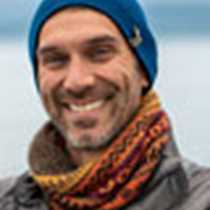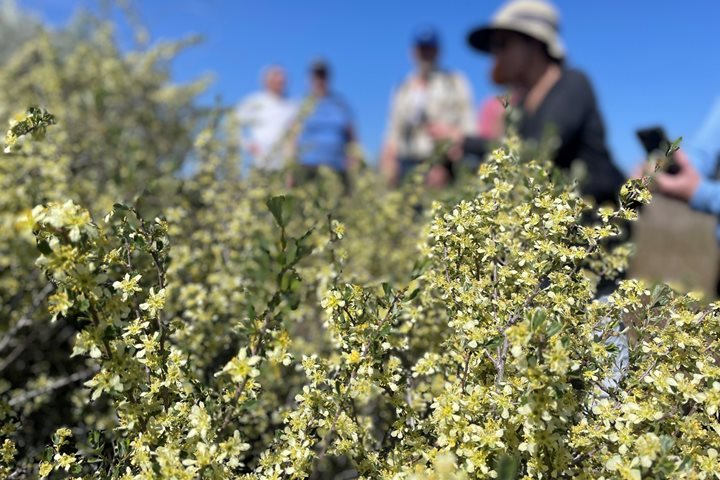We woke to sunny skies as we anchored in Clarkston, Washington. The day would turn out to warm although the morning air was crisp and cool. Today, everyone loaded onto two jet boats to take an exciting journey up the Snake River into the amazing Hells Canyon. We saw great blue herons and western grebes along the shore as we sped away from the town. We eventually left behind the riverside cabins and ranches to enter the wild and deep canyon. Along the way we got a great look at Native American petroglyphs etched into basalt. Just as we were admiring the ancient artwork, we noticed a family of river otters playing in the water near our jet boat! What a joy to watch them wiggle and frolic.
We made it to the part of the canyon where ancient terranes are exposed. These are massive rock formations that originally formed far, far away, millions of years ago before being grafted onto the old west coast of North America… which just happened to be right in the Hells Canyon area. Our jet boats took us as far as The Narrows: the narrowest place in all of Hells Canyon. We got to see the confluence of the Grand Rhonde and Salmon Rivers and they spilled into the Snake. Besides the otters, we got to see wild turkeys, black-tailed deer, and bighorn sheep. Wow!
Soon after returning to the National Geographic Sea Lion, we jumped up a motor coach and headed back out for more adventure. We drove a short ways to the Nez Perce National Historic Park in Idaho. We watched a moving film that was made by tribal members as a way to tell their story. The museum has some amazing Native American artifacts: deerskin clothing, baskets, weapons, horse saddles, etc. It even has a small, tattered piece of silk that Meriwether Lewis himself gave to a local Nez Perce chief in 1805.
Back on board the ship, it was time for cocktails and a pleasant recap by Captain Shawn Nettles and expedition leader John Mitchell.







